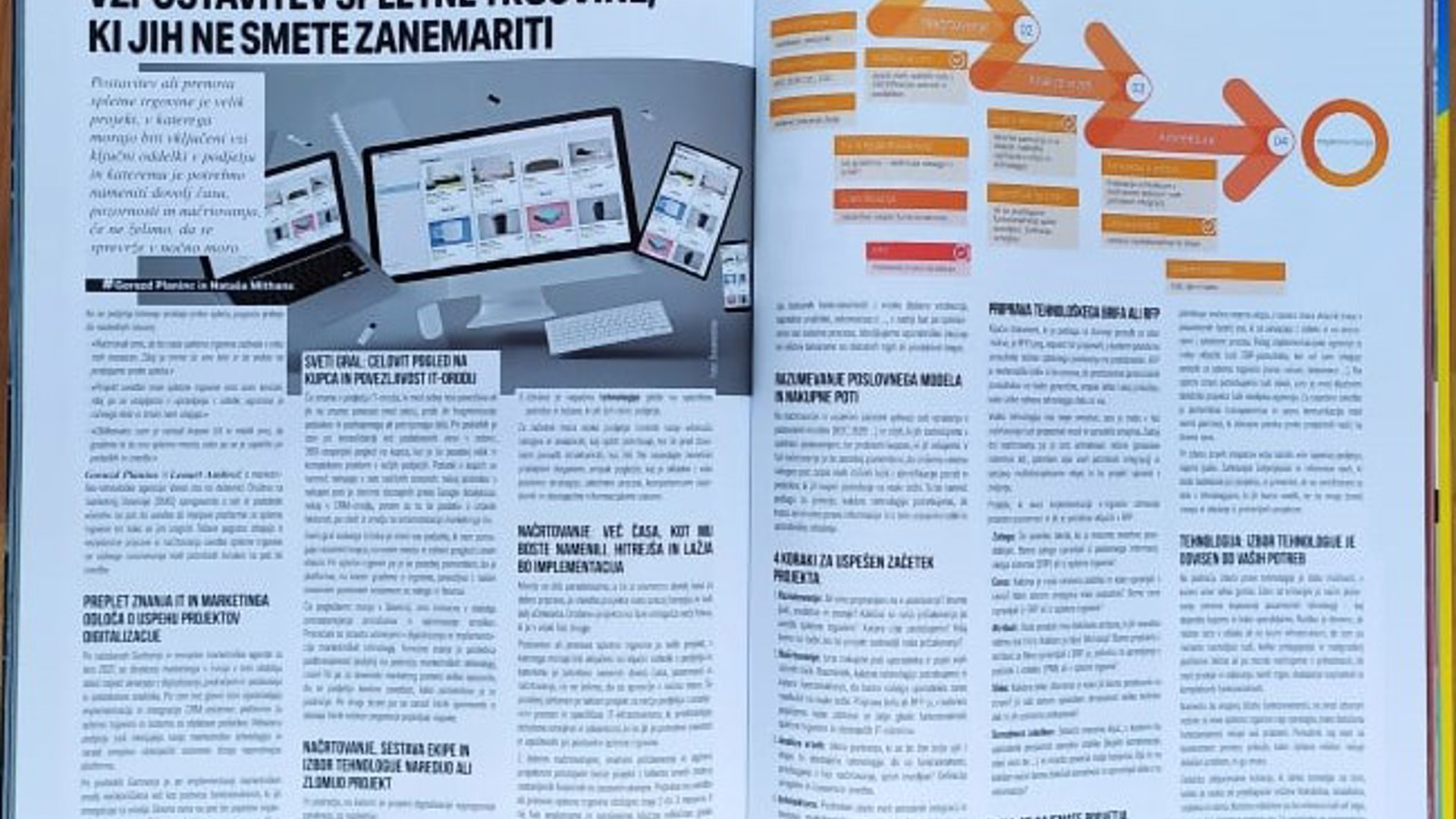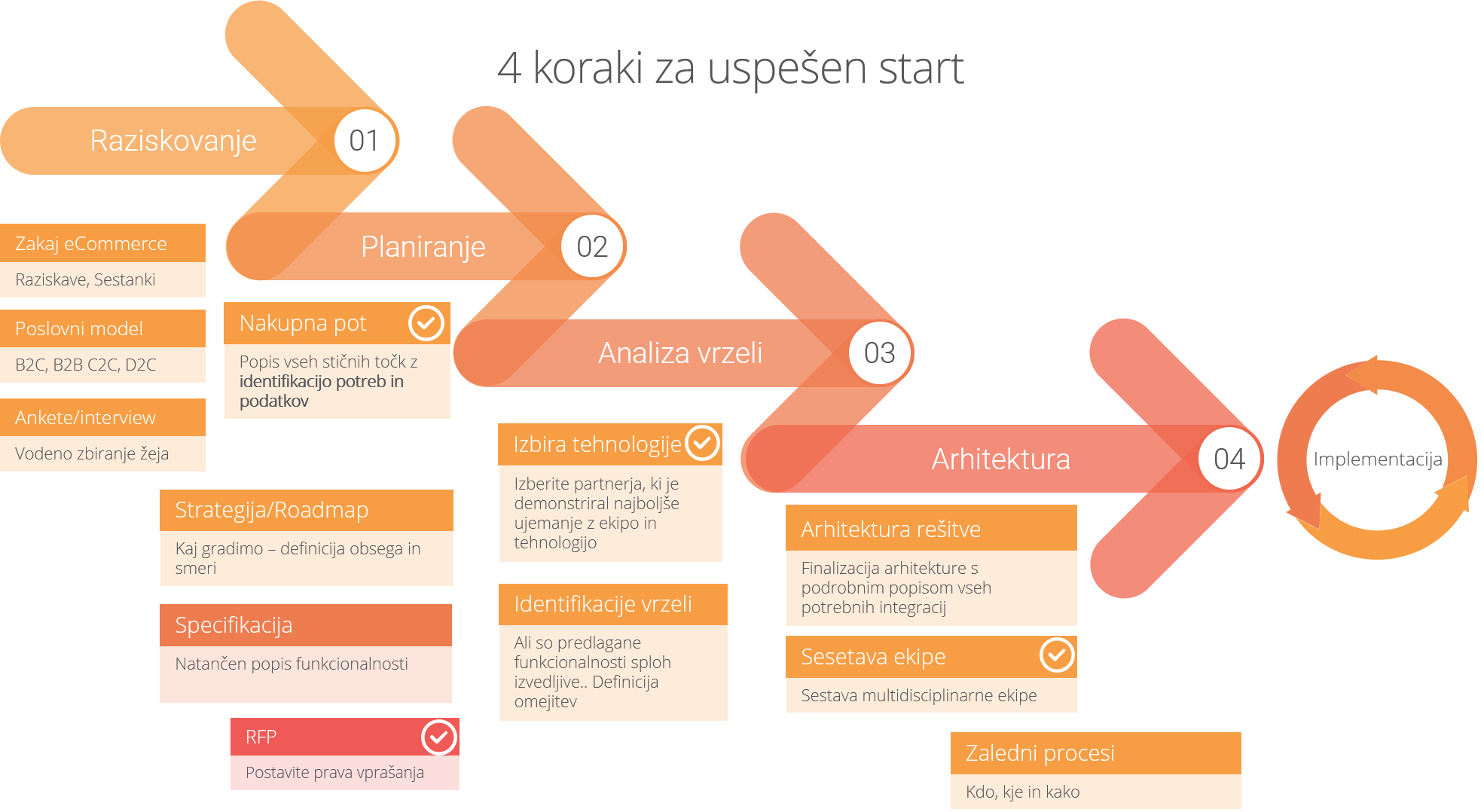
Overcoming Common Challenges in E-commerce Projects
When companies embark on launching an online store, they often encounter unexpected challenges such as:
- "We planned to launch our online store in three months. Now it's been a year, and we're still not selling online."
- "We completed our e-commerce project, but now we are overwhelmed with product management and manual tasks."
- "Our designer created a fantastic UX, but we ran into issues with data and execution."
These are just a few of the pitfalls discussed by Gorazd Planinc and Lenart Ambrož from Vareo during a workshop hosted by the Slovenian Marketing Association (DMS). Many of these problems stem from inadequate preparation, poor planning, and a lack of understanding of the necessary steps to implement or switch e-commerce platforms effectively.
The Importance of Integrating IT and Marketing Knowledge
According to Gartner and the 2021 European Marketing Agenda, marketing leaders in Europe are increasingly focused on digitalization, e-commerce, and data analytics. However, the primary challenge they face is the implementation and integration of CRM systems, e-commerce platforms, and data processing tools. Many companies are also upgrading their marketing technology due to the limitations of their existing systems.
Gartner's research indicates that more than half of the functionality in marketing tools remains unused after implementation. The key obstacle is the lack of a seamless blend of IT and marketing expertise, which is essential to determine whether a particular marketing technology can meet business needs and integrate with existing IT systems.
The Holy Grail: A Comprehensive View of the Customer and IT Integration
Disconnected IT tools or an inability to integrate them leads to fragmented data and duplicated efforts. This challenge is especially significant in larger companies where consolidating data from various sources to create a 360-degree view of the customer can be complex. Customer data may be scattered across different systems, including Google Analytics, CRM tools, invoicing systems, and marketing automation platforms.
The ultimate goal for marketers is to have all customer data in one place for a comprehensive view at the click of a button. In e-commerce, it's crucial that the platform is integrated with your core business systems for inventory and finance management.
Planning, Team Structure, and Technology Selection: Keys to Project Success
Three areas where digitalization projects commonly fail include:
- Poor planning and underestimating project complexity
- Teams lacking the necessary expertise for successful implementation
- Choosing the wrong technology that doesn’t align with specific business needs
Companies must begin by analyzing what they need and structuring their goals before soliciting proposals. Don’t be swayed by flashy sales pitches; instead, focus on what aligns with your business strategy, backend processes, team competencies, and existing IT systems.
Effective Planning Leads to Faster Implementation
Proper planning may seem time-consuming, but it ultimately leads to faster and more effective project execution. Breaking the project into phases allows for focused attention on each stage.
Launching or redesigning an e-commerce platform is a significant project that requires involvement from all key departments. It’s particularly challenging for larger companies with established processes and specific IT infrastructures. With good planning, realistic expectations, and an agile approach, projects can be completed within set financial and time constraints.
Understanding the Business Model and Customer Journey
Successful planning also requires a deep understanding of the business model (e.g., B2C, B2B) and the goals of the online business. Mapping the entire customer journey is crucial—this includes identifying every touchpoint and the data customers need at each stage. This information will guide the choice of technology needed to deliver a great user experience.

4 Steps to a Successful Project Launch
- Research: Are we ready for e-commerce? Do we have the people, resources, and knowledge? What are our expectations post-launch? What goals are we pursuing? When will the project meet our expectations?
- Planning: Map the user’s journey and outline all touchpoints. Consider the technology and features needed to impress users at every stage. Prepare a brief or RFP that outlines your requirements and expectations regarding the e-commerce platform and existing IT systems.
- Gap Analysis: Choose a partner that fits well with your team and technology. Are the features proposed during planning feasible? Define limitations and timelines.
- Architecture: Detail all necessary integrations and assemble a multidisciplinary team for the project. Don’t forget about backend processes and involve stakeholders from all relevant areas.
Preparing a Technological Brief or RFP
The RFP is a critical document that sets the foundation for selecting the right solution. It should provide a detailed technical brief to ensure that vendor presentations are tailored to your specific needs rather than being generic.
Each technology has its limitations, so it’s essential to identify gaps and constraints during the planning phase. The final step is to design the solution architecture, detailing system integrations, and forming the right team to bring the project to life.
Choosing the Right Technology
There are many options when it comes to selecting the right technology. One key criterion is how you will pay for and use the technology. For instance, will the solution run in the cloud or on your infrastructure? Consider how much customization and platform upgrades you need, especially as your business grows and enters new markets.
Instead of searching for features in advance, focus on how a particular feature solves your problem. Ask the vendor to demonstrate how their solution addresses your specific issue.
Set exclusion criteria based on the flexibility, scalability, stability, and security of each proposed solution. Your final decision will also depend on your stage of digital maturity. Beginners might prefer platforms with simple e-commerce solutions, while digitally advanced companies might seek flexible, hybrid solutions that can grow with them and support their business expansion.
By focusing on these aspects, you can avoid common pitfalls and ensure a smoother, more successful digital transformation project.
